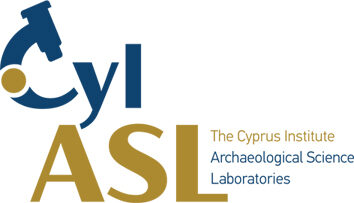Human osteoarchaeological research at STARC revolves around two key themes:
Osteobiography of Mediterranean populations: This research thread covers demographic, pathological, occupational, and dietary lines of evidence that cumulatively elucidate life and death in the ancient Mediterranean. Our research is principally focused on the Eastern Mediterranean and Middle East with skeletal assemblages from Cyprus, Greece, Lebanon, Syria and Iraq. We actively also engage in projects in Italy, Morocco, Tunisia and Libya. Temporally our projects span from prehistory (Early Neolithic) to the 18th century CE. Our approach is biocultural, acknowledging the inextricable link between the biological and social identity of humans as well as their dynamic interaction with the natural, anthropogenic and cultural environment that surrounded them.
Refinement of human osteological methodology: Our laboratory is strongly engaged in the refinement of human skeletal methodologies for the study of mass burials, markers of occupational activity, age-at-death and sex estimation. These methodologies combine macroscopic, microscopic and computational approaches, and have direct implications not only in bioarchaeology but also in forensic anthropology.
Members of the Human Osteoarchaeology group work closely with the other Centers of the CyI, namely with CaSToRC in the development of machine learning approaches for the refinement of methods in metric skeletal sex estimation, as well as the reassociation of mixed bones from mass burials. In addition, we collaborate with members of EEWRC in the study of the impact of micro- and nano-pollution on past populations, with an emphasis on respiratory health.
Advancing Forensic Anthropology
Our osteological research is strongly channelled towards the refinement of existing skeletal methods with direct applications to forensic anthropology and bioarchaeology. We have proposed new methods for quantitative and qualitative sex estimation using the cranium and pelvis, age-at-death estimation adopting Bayesian approaches, and stature and body mass estimation for Greek populations. In addition, we have tested the performance of skeletal occupational markers using macroscopic as well as digital microscopic methods, we have proposed new methods to estimate the number of individuals in commingled assemblages, and we have refined current biodistance estimation methodologies. Members of our lab have also authored a textbook on Osteoarchaeology (Elsevier, 2017) and a series of open-access best practice guides.

M. subscapularis viewed with the aid of 3D digital microscopy. From Figure 2 in Nikita et al. (2019)
Representative publications
Nikita, E., & Nikitas, P. (2021). Measures of divergence for binary data used in biodistance studies. Archaeological and Anthropological Sciences 13(3), 1-14.
Nikita, E., & Nikitas, P. (2020). On the use of machine learning algorithms in forensic anthropology. Legal Medicine 47, 101771.
Nikita, E., Xanthopoulou, P., Bertsatos, A., Chovalopoulou, M. E., & Hafez, I. (2019). A three‐dimensional digital microscopic investigation of entheseal changes as skeletal activity markers. American Journal of Physical Anthropology 169(4), 704-713.
Nikita, E., & Michopoulou, E. (2018). A quantitative approach for sex estimation based on cranial morphology. American Journal of Physical Anthropology 165(3), 507-517.
Nikita, E. (2017). Osteoarchaeology: A guide to the macroscopic study of human skeletal remains. Academic Press.
Nikita, E. (2015). A critical review of the mean measure of divergence and M ahalanobis distances using artificial data and new approaches to the estimation of biodistances employing nonmetric traits. American Journal of Physical Anthropology 157(2), 284-294.
Michopoulou, E., Nikita, E., & Valakos, E. D. (2015). Evaluating the efficiency of different recording protocols for entheseal changes in regards to expressing activity patterns using archival data and cross‐sectional geometric properties. American Journal of Physical Anthropology 158(4), 557-568.
Nikita, E. (2014). The use of generalized linear models and generalized estimating equations in bioarchaeological studies. American Journal of Physical Anthropology 153(3), 473-483.
